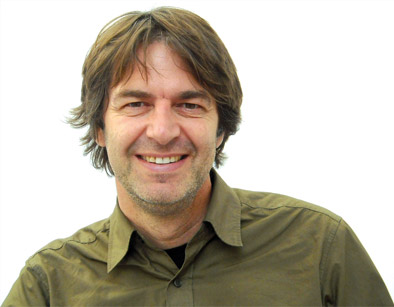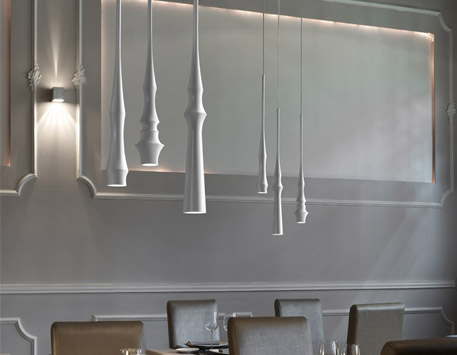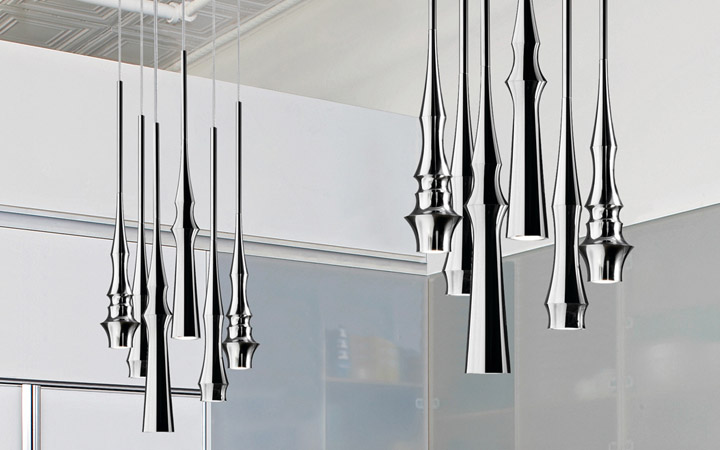A Q&A with Slend designer Christophe Mathieu
How did the design for Slend come about? Any inspirations?
I designed the Slend collection thinking especially of Bover. Its shape popped into my mind because of the material and technology used; I always liked the possibilities of the turning process which could create a rubber material that stretches out as like a chewing gum falling down because of gravity. Also, I had in mind the typical architectural lamps made of tubes (thinner-thicker, longer or shorter) with a spot light at the bottom, for contract or hospitality settings.

Christophe Mathieu
What's your design process like? How do you know if an idea is worth pursing?
Regarding the design process, the first and hardest part was the study of proportions, sizes and shades of each of the pieces. Alone, on its own, it should make an impression without losing harmony when they are together in a cluster. The second step was to find the suitable material and technology: what was clear from the beginning to all of us is that we wanted a material and a manufacturing process that allow us to obtain very good finishes, so when you had the lamp in your hands you could feel an evident contrast between the solid quality of its material and the delicacy of its skinniness and length.
At the end, we opted for using turned solid aluminum with which we could obtain a very precise shape, a high-quality finishing and a physical weight in accordance with the image we wanted to project.
Is there a particular space you think Slend would fit in really well?
As I said, Slend has been designed specifically for collectivities: hotels, stores, restaurants. It's a decorative product, but at the same time it accomplishes an architectural function. It's ideally used in clusters (as a waterfall shape) to fill stairwells, entry halls, etc. Individually, it perfectly fits in bars, hotel reception areas and restaurants.
Did you always want to be an architect/designer?
My father has been a great influence for me. He is an architect and he had his studio at home, so I observed him and later worked with him. On the other hand, since I was a boy I always liked to do things with my hands: drawing, painting, building my own furniture, inventing things. During my youth, what really developed my work was 3 years that I spent in Milan collaborating with several design studios.

What is Barcelona like for a designer?
I was not born in Barcelona, but it is the city that I chose to live and work. Barcelona influences me in many ways: its quality of life, its weather, the sea, its cultural life…and it is possibly the city in Spain where design is present the most.
What does your own home look like? My house is well lit and quiet, with terraces invaded of plants and 360º views of Barcelona, we see the sunrise often in the morning. The interior is functional with a certain Scandinavian and Mediterranean air.
Do you have a favorite fixture that you've designed? My relationship with Bover lighting, in particular with Joana Bover, goes back to 2003. My first product was the Plana lamp in 2004, still in the catalog. I am in favor of long-lasting relationships with companies and the people who are part of them. This brings us to a confidence relationship with less formalism, which helps me to acquire more knowledge of the company and its people, in order to design products better in line with the company’s needs.




